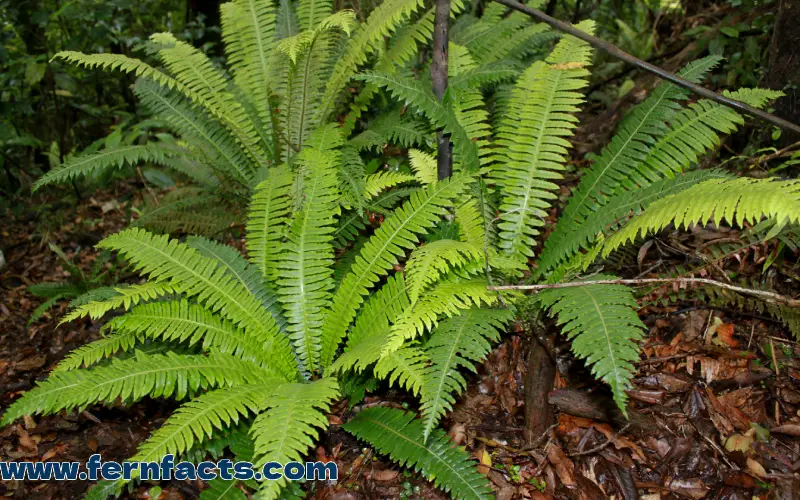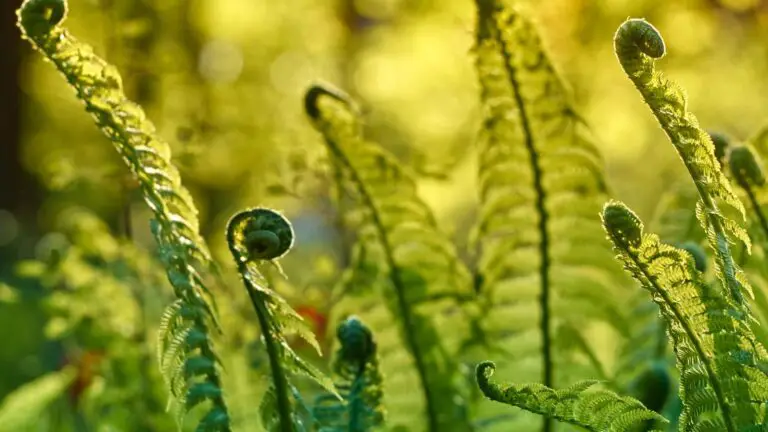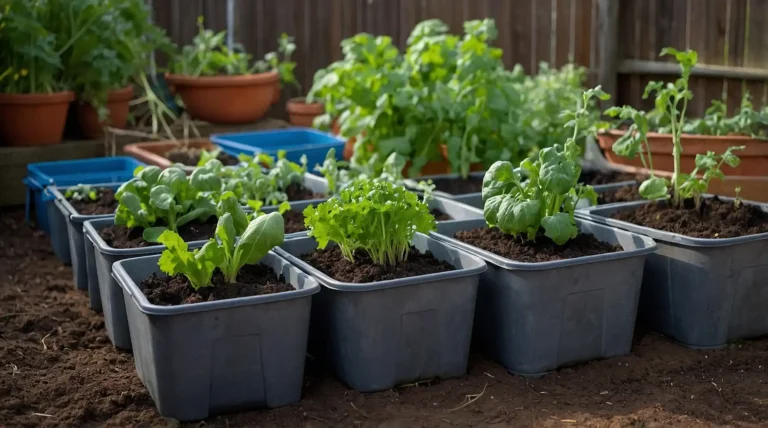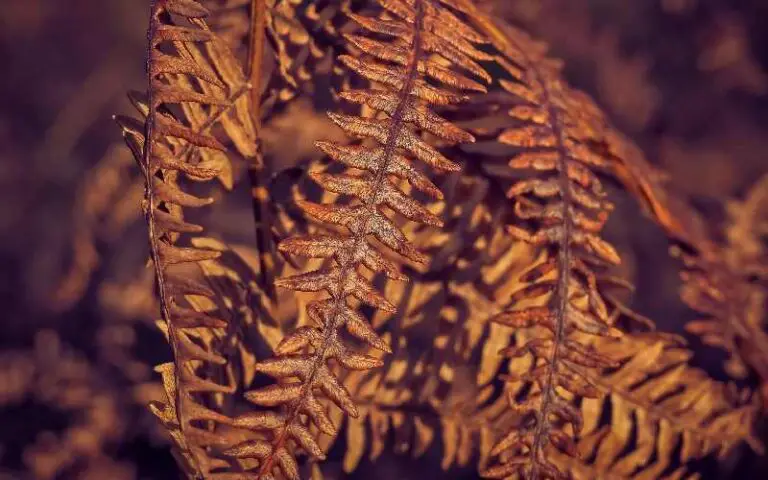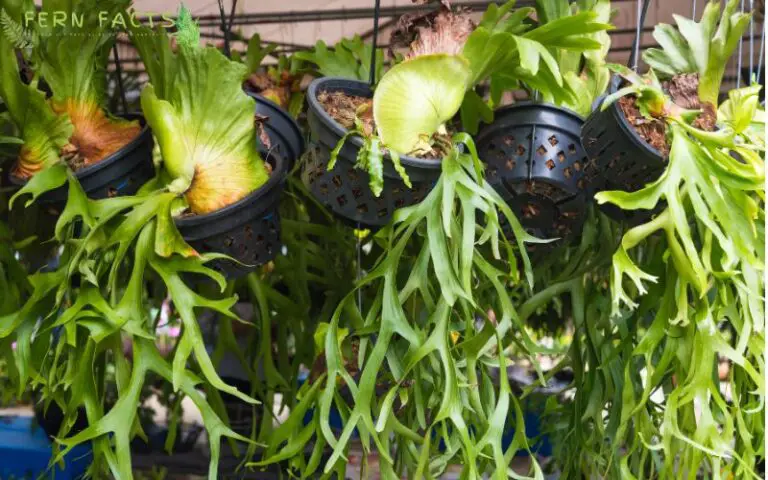When to Plant Ferns Outdoors
If you want to determine how to grow ferns as outdoor plants, then you might need some pre-guiding tips about this topic.
Hence, in this article, we are going to discuss when is the best time to plant any outdoor ferns along with a few listed best outdoor ferns.
Similarly, we will also give you some additional planting tips so that you can easily supervise the outdoor greenery foliage in your house. So let’s begin the topic.
When to Plant Outdoor Ferns
Ferns are one of the easy-growing plants that are loved by all gardeners and plant enthusiasts because of their low maintenance and growing nature. As a Gardner, you can plant ferns at any time throughout the years.
However, there are certain seasons where ferns grow actively if they are planted effectively. It thoroughly depends on your local climate and the Hardiness of the ferns.
Additionally, ferns characteristics or which ferns you are planning to plant also vary the planting time as well. For example, hardy ferns prefer hot summer seasons and intolerant ferns prefer the spring season to be planted.
However, if you are still confused regarding seasons, then choose the safest season for plants, which is the spring season.
Mostly, you tend to plant your evergreen or deciduous ferns from the month of May to September. After plating the ferns, it will take several months for those ferns to establish their root development into the garden soil.
Therefore, choosing the best seasons for plating is also a crucial part for your ferns to grow and nourish in nature.
Best Ferns for Growing Outdoors
Some plants will grow commendably outdoors. You can easily grow them in pots, containers, baskets, or your garden land as well. Here are some fern’s list:
Boston Ferns
- Botanical name: Nephrolepis exaltata
- Common names: sword fern, bluebell Fern, tuber ladder Fern, Fishbone Fern
- Plants: Evergreen
- Native range: America
- Native habitats: moist shady locations like humid forests, swamps, and floodplains
- Shade requirements: partial shade or full shade
- Height: 20 to 98 inches
- Soil: acidic soil (6.0 to 6.5), moist well-drained, drought tolerant
- Hardiness zone: 9,10,11
Boston Ferns are one of the prominent choices as outdoor ferns. Their green bushy appearance will give you a natural wilderness in your landscape. You can plant them in mini pots or any containers.
Alternatively, you can also plant them in your garden soil as well with other plants. They are fond of moist shady places for their natural habitats and can tolerate drought for a certain period but not for too long.
Maidenhair Ferns
- Botanical name: Adiantum raddianum
- Plants: evergreen
- Native range: South America
- Native habitats: forest, flocks, river banks, coastal cliffs, trains, and streams
- Shade requirements: partial shade
- Height: up to 0.5 m
- Soil: neutral, alkaline, moist, well-drained
These maidenhair ferns are well-recognized as both indoor and outdoor growing plants. That’s why you can plant them in your garden or yard as well.
Their small fronds will give you the best greenery appearance throughout your garden. Similarly, their seasonal colorful growth will also enhance your garden’s appearance with other plants.
Like all other ferns, they also prefer a humid atmosphere with dappled light conditions therefore, try to give them their ideal condition to thrive and grow actively.
Holly Ferns
- Botanic name : Cyrtomium falcatum
- Family: Dryopteridaceae
- Common names: Japanese holly fern and house Holly fern
- Native Region: Eastern Asia
- Plant: Perennial
- Hardiness zone: 6,7,8,9
- Height: around 18 to 24 inches
- Shade: partial shade or full shade
- Soil: well-drained
Japanese Holly ferns are another outdoor fern that will enhance your garden’s look with their glossy dark green lush appearances of holly branches.
These ferns prefer moist and well-draining soil to thrive and grow. As it’s an evergreen plant that’s why it can’t survive in icy or frozen countries.
Additionally, they need full or partial shade to grow properly. They can even survive in low light conditions but try to give their ideal condition.
Lady Ferns
- Botanical names: Athyrium filix-femina
- Plants: Deciduous plants
- Shade: partial shade or full shade
- Height: around 1 m
- Soil: acidic or neutral. Moist, poor drainage tolerated
- Temperature: 50- 80 F
- USDA zone: 4,5,6,7,8,9
Lady fern is another fern species that can be a great option for your garden land as outdoor plant. Since they are deciduous plants that will lose their leaves on a seasonal basis and will bloom again next year.
They also prefer fully shaded places with the right moisture level in it. Still, they can survive under full sunlight conditions if their soil is moist enough. You can mix their soil with acid or neutral in it.
As they have poor drainage tolerance, you need to give them a well-draining system so that extra water can be drained out easily.
Moreover, these ferns will be a great option in your garden yard that will give your garden a greenery look due to their light green color.
Christmas Ferns
- Botanical name: Polystichum acrostichoides
- Plants: Evergreen
- Native range: North America
- Shade requirements: Full or partial shade
- Height: up to 1 m
- Soil: neutral or alkaline and moist, well-drained
Christmas ferns are evergreen plants which will be great additional outdoor plants to have in your garden. Their glossy, green fronds will remain the same over the year which will enhance your garden’s appearance.
Similarly, they are fond of shady habitats like woodlands, rocky slopes, and stream banks. So you can also utilize these ferns to decorate your garden landscape with a mini pool, and pathways.
As these are evergreen plants for indoor and outdoor, they are also fond of moist damp environments with filtered sunlight. Note that these ferns are ornamental plants for gardens that will make the garden look more natural and wild.
Tips for Planting Ferns Outdoors
Before planting your ferns outdoors, you need to have some common observations in your garden or the place where you tend to grow these ferns.
Check the Garden Soil
Firstly you need to ensure your garden landscape soil thoroughly. You have to ensure that the soil is well prepared to plant ferns or not.
Since most ferns prefer acidic soil or neutral soil, therefore you need to make your garden soil well-prepared for your ferns.
You can add peat moss, organic compost, and perlite to enhance the soil conditions. Similarly, most of the ferns prefer moist soil so better you keep the moisture level in the soil.
Although most of the ferns can tolerate drought not for too long.
Check the Shade Requirements
Then, you need to ensure the place you have chosen to plant, is fulfilling your fern’s shade requirements or not. Because some ferns prefer partial to full shade.
So you have to give those ferns partial to full dappled shade to grow. Conversely, few ferns prefer sunlight or they have a tolerance level to sun rays.
So you don’t need to worry about them much. So according to your fern species, you need to give them an appropriate shade to thrive.
Check Hardiness Zone
Since I have already shared what time will be the best for planting, therefore choose a time that can enhance your fern’s growth with the upcoming season.
So, you can easily plant your ferns in the early spring or summer seasons as well. However, on average temperature, you can plant your ferns any time of the year. (couldn’t find an appropriate picture)
Do Proper Mulching
After planting the ferns, you certainly need to protect your ferns from external hard sources like heavy wind, rain, frosty season, etc.
Hence, you can add mulch on the surface of the ground around your plants; it will protect your ferns. You can use a two-inch layer of mulch over the garden surface around your plants.
Additionally, you can add pine, leaf mold, dead plants, leaves, compost, bark, or grass clipping in the mulch. It will hold back the moisture for a long time.
So even if you forget to water your plants, this mulch will help to hold the moisture and nourishments in the soil.
Yearly Fertilizing
After planting your ferns, you don’t need to worry about their fertilization process since you already prepare the soil with rich proponents.
But over the year, you need to fertilize your ferns so that they can grow actively in their growing season. Based on your fern species you can choose fertilizer like liquid fertilizer or slow-release fertilizer with an equal portion of N:P: K or half strength portion from it.
Preventing Pests and Diseases
Since most ferns are very prone to mealybugs, whiteflies, aphids, spider mites, and slugs, you might see some pest problems around your ferns if they are not in ideal condition.
In such cases, you can use pesticides or organic neem oil spray to get rid of those pests and insects.
Summing Up
In short, ferns are very low-maintenance plants to have in their garden land or yard. However, there are some specific times to plant these ferns outdoors to have their active growth.
Seasons like early spring and summer might be the best time to plant any outdoor ferns in your pot or yard. However, on an average hardiness temperature, you can plant ferns any time throughout the year as well.
Additionally, for growing your ferns outdoors, you need to follow some essential tips such as checking the garden soil, shade requirements, Hardiness zone, mulching and yearly fertilization, and preventing pest problems.
By evaluating all the things properly, you can easily grow and plant any outdoor ferns in your garden yard and give them a thriving life.

